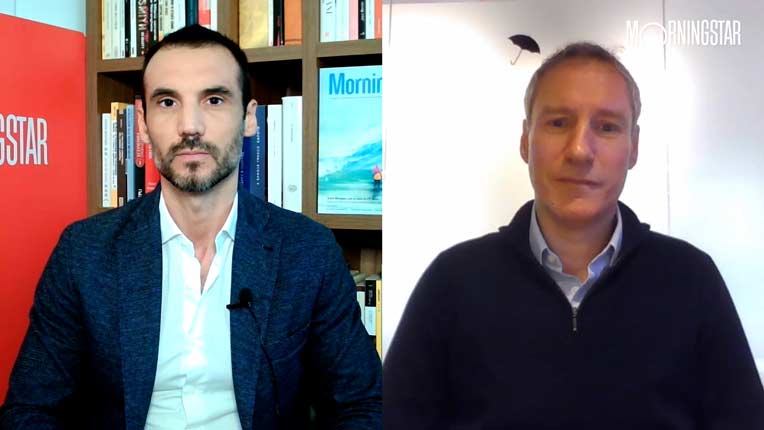Jason Stipp: I'm Jason Stipp for Morningstar. After solid performance in the markets for most of 2012, what opportunities are left for investors. Here to offer his take is Pat Dorsey, president of Sanibel Captiva Investment Advisers. Thanks for joining me, Pat.
Pat Dorsey: Anytime, Jason.
Stipp: Yeah,four names for us today, some interesting stories here. The first one is in the tech industry, Intel. I feel like the conventional wisdom on this company is that they're behind the trend on mobile. They are in a secular decline. There's also some cyclical issues going on. But you say it's a buy right now?
Dorsey: Yes. Certainly they have not had the success in mobile one would have hoped. These lower-power chips and designs from ARM Holdings really have stolen the lion's share of that market. And Intel has been just behind the curve in getting kind of a low-power mobile chip out there. But what you need to remember is that of course all these mobile devices we use, they use processing power that's based somewhere else, in a giant data center somewhere, and Intel has a pretty good chunk of the server market.
So, granted, it's not good that they are behind their mobile curve, but their data-center business is about 25% of operating profits. That's growing at a much, much faster clip, at a midteens level, maybe low-teens, relative to the PC business, which is probably more of 5% growth longer term because PCs are getting replaced by tablets and are really a pretty moribund market in developed markets. But PCs are still growing in a decent clip in emerging markets, and Intel of course has a very good record of capital allocation.
They recently borrowed about $6 billion at a 2.5% [interest rate] and their stock is yielding 4.5%, which is a good decision for a CFO in my book. And so you've got a 4.5% yield that probably can grow at 7%-8% and really one of the widest moats in technology. So, from our perspective we think that's a pretty good equity income holding.
Stipp: Picking number two is in defense industry. Given the fiscal cliff and all the worries about cut backs, why would you go anywhere near the defense industry?
Dorsey: Yeah, why would you, except that it's [trading at] 9 times earnings and they own Gulfstream. So this is the General Dynamics--one of the kind of the big defense contractors. They own a business called the Gulfstream, which makes the eponymous jets. That's about 30% of operating profits. This is a pretty cyclical business, and we've had a pretty good aerospace cycle so far, but their backlog is still pretty solid and about 70% of their backlog is from non-U.S. customers.
They really haven't seen U.S. corporations step back up to the plate. There has been a lot of interest from Asian countries and the corporations. A good chunk of their business is also what's called a wheeled combat. So things like the Striker and of course the usage of that will ramp down as soldiers come home from Afghanistan and Pakistan, but I think at 9 times earnings that's pretty well priced in.
And the key thing here really is they have much less exposure than Lockheed Martin, for example, to any single weapons platform. They got about 11% of operating profits from nuclear submarines. However, the Virginia Class submarines they've been buying have been reauthorized, delivering about two of them per year, and that weapons' platform really doesn't get the political challenges that say F-35 does. You've got about a 3% yield right now, a payout ratio of about 30%-35%, so there's room to move that up. [The company has a] huge commitment to the dividend over time; it's growing about 13%. So I think the total returns and probably some good equity returns are going to be pretty solid on General Dynamics. I like buying things everybody thinks are dead.
Stipp: Let's swing over to health care. Another company that's been under some pressure is Express Scripts. Health care obviously had been in the headlines a lot because of regulations, Obamacare and [the November election]. What are you seeing in Express Scripts? What are the concerns, what are the markets worried about, and what opportunities do you see there?
Dorsey: Thecore thesis on Express Scripts is simply they purchased Medco earlier this year giving them just a massive market share in the pharmacy benefit market. They're one of the few companies, PBMs in general, that basically make more money as the system saves money because PBMs have a higher margin on generics than they do on branded drugs. They have a lot of branded drugs like Lipitor coming off patent; that will be a nice tailwind for next few years. But the key thing is that they're sort of the insulated from a lot of the political rhetoric that goes on because they are part of the solution to bending the cost curve, not part of the problem. Shares got bit whacked in November on concerns about slowing enrollment growth in 2013. At 13 times earnings for a business with very high return on capital and some phenomenal secular growth prospects, I think those concerns are pretty well baked in.
Stipp: Your last idea is in financials, an area that's done pretty well.
Dorsey: Yeah, absolutely.
Stipp: What's the story with Wells Fargo? Why are you looking at it right now? The valuation isn't screaming buy, right?
Dorsey: Well, it's pretty good. I mean it's about 1.2 times book value right now, which for a company with the quality of Wells Fargo running at about 12% or 13% of return on equity, it's not a bad price. But really the story here is dividend growth. As you and I've talked about in the past, I think investors undervalue dividend growth and overvalue current yield. And at a 2.25% current yield, you kind of think Wells Fargo's not very exciting.
However, right now their payout ratio is kind of capped at about 30% by the feds. Given Wells Fargo's strength, and sort of the strengthening economy and the strengthening balance sheets of all of our financial system, I think the odds that the cap lifted at some point in the next couple of years are pretty good. And Wells Fargo's management has been very, very straight with people about saying, "It's your money; we are going to hike that payout ratio back to 50%-60% range." And once they do that, on current prices you are looking at a 5%-6% yield, which I think is extremely attractive and probably will surprise investors when that finally does happen.
Stipp: After a solid year in the market it's good to know that there are still some good opportunities for investors and solid franchises to boot. Thanks for joining us today with those ideas.
Dorsey: Thanks, Jason.
Stipp: From Morningstar I'm Jason Stipp. Thanks for watching.






















